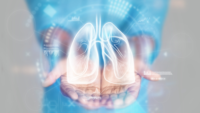Clarification will strengthen nursing.
- All nurses and student nurses need to understand and embrace the definitions of “professionalism” and “professional identity in nursing” to help them think, act, feel, and be a nurse.
- Nurse educators and practicing nurses can use the Amended Miller’s Pyramid: Nursing as a framework to foster student formation of professional identity.
- A safe, healthy work environment includes a deep understanding of professional identity in nursing that communicates the value and contribution of nurses. Policy initiatives can help change the landscape in all healthcare environments.
Professionalism and professional identity in nursing have taken a significant place within media and research, with discussion flowing into academic and healthcare settings. Understanding the meaning of professionalism and how a nurse’s professional identity is formed gives rise to critical analysis of the definition and relationship of these concepts. Although discussion of nursing as a profession can be linked to earlier nursing literature, a clear and crisp differentiation between professionalism and professional identity remains unclear. This lack of clarity may suggest an insufficient understanding of their connection to each other and reflect the need for a common language. (See Definitions.)
Re-imagining nursing’s social contract with the public
Nursing professionalism begins with you
Definitions
Professionalism
- The conduct, aims, qualities, and skill that characterize the profession of nursing.
Professional identity in nursing
- Sense of oneself, and in relation to others, that is influenced by characteristics, norms, and values of the nursing discipline, resulting in an individual thinking, acting, and feeling like a nurse.
A shift away from assumptions about the principles of professionalism can help support a transformational process of professional nurse identity formation and development. This shift requires clear definitions, an examination of their relationships, and an understanding of the impact on nursing education, practice, policy, and regulation. All nurses, practicing and students, must understand and embrace these concepts to help them think, act, and feel like a nurse.
Professionalism
Finkelman defines professionalism as “The conduct, aims, or qualities that characterize or mark a profession.” According to the American Nurses Association’s (ANA’s) Guide to Nursing’s Social Policy Statement, nursing is grounded in social responsibility and reciprocity; the relationship and mutual expectations set between nursing and society form the basis for professionalism. In addition, ANA defines nursing as “the protection, promotion, and optimization of health and abilities, prevention of illness and injury, alleviation of suffering through the diagnosis and treatment of human response and advocacy in the care of individuals, families, communities, and populations.”
To embrace the work of nurses, society identifies the need for a systematic body of knowledge and skills called nursing and provides a framework for practice. In recognizing nursing as a profession, society affords it the privilege of control over the critical aspects of its education and practice. Although much has been written about professionalism, a clear and agreed upon definition remains elusive. The concept of professionalism in nursing has evolved throughout its complicated history, and it may hold different meanings globally. We want to define professionalism in nursing from a North American perspective.
Evolution of nursing
Over time, nursing has evolved to attain a professional status. According to Finkelman, professions have a systematic body of knowledge, as well as explicit and implicit standards, behaviors, and values that individuals agree to learn and adopt by nature of their decision to enter the profession.
A profession includes formal higher education and provides a service that benefits individuals and the community. In addition, members of the profession maintain a unique role that recognizes autonomy, accountability, and responsibility in and for their professional practice. For example, Finkelman’s description of the characteristics of a profession are evident in the following nursing documents and organizations:
- ANA’s American Nurses Association’s Nursing: Scope and Standards of Practice defines professional nursing and establishes nursing’s scope of practice and standards of professional performance.
- ANA’s Guide to Nursing’s Social Policy Statement and the 16 elements that comprise the reciprocal expectations of nursing and society provide a definition of the profession, including its knowledge base, scope of practice, regulation, and obligation to society.
- The ANA Code of Ethics for Nurses with Interpretive Statements (the Code) details nine provisions to assist the profession in managing its practice and provides a guide for nursing responsibilities in a manner consistent with quality care and the ethical obligations and core values of the profession.
- According to the American Association of Colleges of Nursing (AACN), the profession has a distinct body of core disciplinary knowledge that defines and justifies the concerns and priorities of the discipline and delineates nursing from other related professions. This knowledge is intellectually structured by nursing concepts and theories developed to describe and orient phenomena important to the profession.
- State Boards of Nursing and Nurse Practice Acts support professional self-regulation. The profession determines the qualifications required for entry to practice, and authorized regulatory bodies have legal oversight over members of the profession to protect the public by ensuring competent, safe practice.
- Professional nursing associations serve as evidence of an organized profession and perform functions that foster a professional culture, advocate for the profession, maintain the profession’s integrity, and work to advance nursing (for example, supporting increased specialization built on defined criteria and development of nursing education, research, and scholarship).
Ultimately, we define professionalism in nursing as the conduct, aims, qualities, and skills that characterize the profession. Professionalism serves as a starting point for professional identity formation.
Professional identity
Professional identity formation coexists with one’s personal identity and begins in nursing education programs, occurs in stages, and represents an intentional decision to integrate the professional values, beliefs, and behaviors that result in a professional nurse. Professional identity also includes how others perceive us and how we perceive ourselves. (See A transformative process.)
A transformative process
The process of becoming a professional nurse flows from individual identity through learning to think like a nurse to being a nurse.


Godfrey and Young define professional identity in nursing as “a sense of oneself, and in relation to others, that is influenced by the characteristics, norms, and values of the nursing discipline, resulting in an individual thinking, acting, and feeling like a nurse.” The International Society for Professional Identity in Nursing (ISPIN) adopted this definition and identified four domains that align with ANA’s Nursing: Scope and Standards of Practice and the Code—values and ethics, knowledge, nurse as leader, and professional comportment. Nurses have responsibility for embodying this definition and the four domains in all areas of practice.
Values and ethics
ISPIN defines values and ethics as “a set of core values and principles that guide conduct.” For example, the Code emphasizes that nurses must embrace certain morals and values, including honesty, respect, veracity, integrity, caring, autonomy, social justice, equity, nonmaleficence, beneficence, self-determination, and respect for human dignity. Nurses frequently encounter issues in the complex healthcare environment in which they’re required to maintain and improve the ethical environment. Nurses’ core values must include diversity, equity, inclusion, and belonging as guiding principles toward nurses acting ethically. This includes advocating and promoting healthy work environments where everyone feels safe and supported.
Knowledge
ISPIN defines knowledge as “the analysis and application of information derived from nursing and other disciplines, experiences, critical reflection, and scientific discovery.” Similarly, ANA emphasizes that nurses hold accountability for life-long learning and that competence is a self-regarding duty. Nursing’s core body of knowledge guides development of the clinical judgment needed for competent practice.
Nurse as leader
ISPIN and the ANA suggest that every nurse must demonstrate characteristics of leadership within their formal and informal roles. ISPIN defines the concept of nurse as leader as “inspiring self and others to transform a shared vision into reality.” These characteristics include advocacy, appropriate delegation, collaboration, respect, kindness, mentoring, participation in professional organizations, and conflict resolution.
Professional comportment
ISPIN and the ANA believe that nurses demonstrate professional behavior through words, actions, and presence. They promote civility, respect, kindness, and self-awareness via communication and collaboration within interprofessional teams, as well as through individual conduct that supports patient and workforce (nurse) safety and satisfaction and quality patient care.
Internalizing professional identity
Nursing education, practice, policy, and regulation require conceptual clarity of professionalism and professional identity. The foundational principles and concepts of professionalism within nursing education explain nurses’ and the profession’s responsibility to society.
Professionalism within many health-related disciplines traditionally has been taught as learning domains of knowledge and skill acquisition, rather than as an intentional holistic focus on professional identity formation. Nurses experience a transformational process that leads them to think, act, feel, and fully integrate into the role. For example, Benner’s work through the lens of the Dreyfus model focuses on acquisition and development of proficiencies in skills and knowledge based on five levels (novice to expert). We suggest that these measures focus on thinking (knowledge) and acting (skills, behaviors, and clinical judgement), which serve as measures of doing and align with professionalism assessment; however, they fall short of the holistic formation of professional identity. Other healthcare disciplines recognized and have adopted the explicit teaching of professionalism (knowing and doing) to intentionally focus on forming a professional identity.
Cruess and colleagues’ landmark article on professional identity formation describes this process as our sense of ourselves as we move from being a member of the public to becoming a skilled professional. This journey involves the internalization of behavioral and decisional norms. Others witness professionalism as an outward expression of first knowing the norms (knowledge) and then practicing (doing) them. This includes demonstrating competencies of explicit and implicit standards and values defined by professional behaviors (skills, clinical judgment, ethical conduct, and person-centered care). Benner notes this development in the novice-to-expert model of skill and behavior proficiencies.
The concepts of professionalism and professional identity in nursing exist independently—distinct in purpose and explicitly necessary. Professionalism provides consistent foundational knowledge, characteristics, aims, values, behaviors, scopes of practice, and standards of professional performance. Professional identity, constructed at the level of the individual, involves thinking, feeling, and acting like a nurse. This process must include socialization as a member of the nursing profession (“we are nurses”), integration of one’s role within the greater healthcare community, and an embrace of one’s responsibility to society.
Professional identity is further supported by Benner and colleagues in their call for radical transformation in which nurses enact their knowledge, skills, and behaviors of doing, knowing, and being a nurse. Internalization of nursing identity formation deepens self-efficacy of the norms relating to our behavioral decisions, which are influenced by mentorship, self-reflection, and professional experience. This connection supports current and future societal needs and must be grounded in an ongoing connection to who we are as nurses. In addition, a nurse must demonstrate professionalism inclusive of nursing core values, cultural humility, ethics, beliefs, knowledge, professional comportment, acceptance, and accountability for professional responsibilities. In other words, every nurse is a leader.
According to Phillips and Priddy, a well-formed professional nursing identity enhances the nurse’s well-being and growth, improves patient and workforce safety, and guides connection to the community of practice. It also provides an agreement and social contract between the nurse and society as to what attributes govern their work, regardless of role or practice setting.
Nursing education, practice, and policy
In collaboration, nurse educators and practicing nurses can use the amended version of Miller’s pyramid as a framework to foster student formation of professional identity. Originally, Miller’s pyramid was used to assess medical student competency (Knows [knowledge], Knows how [competence], Shows how [performance], and Does [action]). The amended pyramid includes Is (professional identity). Using the amended pyramid, academic and practice partnerships can promote intra- and interdisciplinary collaboration with a common language to communicate the nursing image to society and provide a consistent mental model that enhances formation and workforce sustainability.
The framework also can help guide new graduate transition to practice programs. The learning environment must support professional identity formation over time via education, clinical experiences, and social interactions. These efforts must emphasize preparing novice nurses for practice, using competency-based assessment methods in nursing education, and ensuring overall nursing workforce retention.
When applied to nursing, the amended Miller’s pyramid represents five levels of nurse professional identity formation. Students enter nursing programs with existing personal identities and an expressed desire to become nurses. The aim of becoming a nurse transcends accumulation of the skills and knowledge of nursing to integrate the personal and professional identity of the student as they move toward self-efficacy. Professional identity in nursing is developed in stages (first as the identity of a student and progressing toward the professional identity of a nurse) as a result of developing knowledge and clinical and nonclinical experiences. Perceptions (of self and others) align the nurse (self-efficacy) with colleagues (collective efficacy) in achieving goals.
By acquiring knowledge, attitudes, and behaviors—as outlined in the pyramid—identity formation occurs. In other words, the nurse progresses from Knows to Is. Engaging the nurse in identity development occurs best within a practice community that provides guidance, mentorship, and education to foster confidence, critical thinking, integrity, and self-efficacy, which results in the individual demonstrating the basic knowledge, attitudes, values, and behaviors expected of a nurse.
Nurse educators must implement learning experiences and assessments that allow students to demonstrate competence at each stage of the pyramid. However, prelicensure graduates won’t reach the final IS level, which includes the nurse’s intrinsic and extrinsic socialization. Professional identity involves the connection of doing and being that occurs during a successful transition to practice, in the consistent demonstration of nurse attributes, and in the transformation to a skilled professional. Essential to this process are integration and socialization into a community of practice guided by role modeling and mentoring. All nurses need a workplace environment that supports them as they embrace their professional identity. (See Amended Miller’s Pyramid: Nursing.)
Amended Miller’s Pyramid: Nursing
The Amended Miller’s Pyramid depicted below outlines how to assess nurses as they transform from novice to expert.


Consistent language, intentional focus
Professional identity acquisition isn’t a new phenomenon; however, the profession and individual nurses require consistent language regarding professionalism and professional identity and an intentional focus on professional identity formation in nursing, which includes learning to be a professional. The work of clarifying professionalism and professional identity in nursing may hold value in providing a lens through which future researchers can examine these concepts across the career continuum. Research has the potential to help nurses become authentically aware of the expected professional behaviors and caring practices woven into their professional identity.
Rhoda A. Owen is an associate professor , PhD in nursing program director, and nurse educator certificate program director in the College of Nursing and Professional Disciplines at the University of North Dakota in Grand Forks, and president of the International Society for Professional Identity in Nursing. Lynne M. Kuhl is an assistant professor of nursing (retired) at Viterbo University in Lacrosse, Wisconsin, and a nursing education consultant at Ascend Learning in Leawood, Kansas. Chelsea O.P. Hagopian is an assistant clinical professor at the Nell Hodgson Woodruff School of Nursing, Emory University in Atlanta, Georgia, and executive director of the Georgia Nursing Workforce Center. Dawn M. Goodolf is an associate dean and associate professor at Helen S. Breidegam School of Nursing and Public Health, Moravian University in Bethlehem, Pennsylvania. Christina Ferrell is an assistant professor and the RN-to-MSN program director at the University of Mississippi Medical Center in Jackson. Debra Liebig is the director of performance improvement at St. Mary’s Medical Center in Blue Springs, Missouri. Matthew S. Howard is the director of scholarship and leadership resources at Sigma Theta Tau International Honor Society of Nursing. Kary Anne Weybrew is a grant writer, counselor, and new program director for the College of Nursing and Allied Health in Los Angeles, California. Jean Yockey is an associate professor in the nursing department at the University of South Dakota in Vermillion.
American Nurse Journal. 2024; 19(9). Doi: 10.51256/ANJ092414
References
American Association of Colleges of Nursing. The Essentials: Core Competencies for Professional Nursing Education. 2021. aacnnursing.org/Portals/42/AcademicNursing/pdf/Essentials-2021.pdf
American Nurses Association. Nursing: Scope and Standards of Practice. 4th ed. Washington DC: American Nurses Association; 2021.
Benner P. From Novice to Expert: Excellence and Power in Clinical Nursing Practice. Commemorative Edition. Upper Saddle River, NJ: Prentice Hall; 2000.
Benner P, Sutphen M, Leonard V, Day L, Shulman LS. Educating Nurses: A Call for Radical Transformation. San Francisco, CA: Josey-Bass; 2009.
Brewington J, Cusatis Phillips B, Godfrey N. Professional identity in nursing: Adopting a systems approach regarding diversity, equity, and inclusion. Nurs Educ Perspect. 2023; 44(1):70-1. doi:10.1097/01.NEP.0000000000001092
Clickner DA, Shirey MR. Professional comportment: The missing element in nursing practice. Nurs Forum. 2013;(2):106-13. doi:10.1111/nuf.12014
Cruess RL, Cruess SR, Steinert Y. Amending Miller’s pyramid to include professional identity formation. Acad Med. 2016;91(2):180-5. doi:10.1097/ACM.0000000000000913
Cruess SR, Cruess RL, Steinert Y. Supporting the development of a professional identity: General principles. Med Teach. 2019;41(6):641-9. doi:10.1080/0142159X.2018.1536260
Finkelman A. Professional Nursing Concepts: Competencies for Quality Leadership. 4th ed. Burlington, MA: Jones & Bartlett, Inc.; 2017.
Fitzgerald A, Clukey L. Factors influencing nursing professional identity development: A qualitative study. Nurs Forum. 2022;57(6):1346-53. doi.org/10.1111/nuf.12816
Fowler MDM. Guide to Nursing’s Social Policy Statement: Understanding the Profession for Social Contract to Social Covenant. Washington DC: American Nurses Association; 2015.
Fowler MDM. Guide to the Code of Ethics for Nurses with Interpretive Statements: Development, Interpretation, and Application. 2nd ed. Silver Springs, MD: American Nurses Association; 2015. (classic)
Fry-Bowers E, Rushton CH. Re-imagining nursing’s social contract with the public. Am Nurse J. 2023;18(9):14-20. doi:10.51256/ANJ092314 https://www.myamericannurse.com/re-imagining-nursings-social-contract-with-the-public/
Godfrey N, Young E. Professional identity. In Giddens JF, ed. Concepts for Nursing Practice. 3rd ed. St. Louis, MO: Elsevier; 2021: 363-70.
Hinkley TL, Kuhl L, Liebig D. Professional identity in nursing: The role of efficacy in navigating the work environment. Nurse Lead. 2023;21(2):174-8. doi:10.1016/j.mnl.2022.12.006
Joseph ML, Phillips BC, Edmonson C, et al. The nurse leader’s role: A conduit for professional identity formation and sustainability. Nurse Lead. 2021;19(1):2732.doi:10.1016/j.mnl.2020.10.001
Owens, RA, Godfrey N. Fostering professional identity in nursing. Am Nurse J. 2022;17(9):12-6. https://www.myamericannurse.com/fostering-professional-identity-in-nursing/
Phillips BP, Priddy K. The link between safety, quality, and professional identity: What leaders need to know and do. Nurse Lead. 2023;21(2);158-62. doi:10.1016/j.mnl.2022.12.001
Thompson JA. Professional identity in nursing’s influence on wellbeing. Nurse Lead. 2023;21(2):163-5. doi:10.1016/j.mnl.2022.12.004
University of Kansas Medical Center Professional Identity in Nursing. What is professional identity in nursing? kumc.edu/school-of-nursing/consulting/professional-identity/about/what-is-professional-identity-in-nursing.html
Key words: professionalism, professional identity in nursing, nurse educators, student nurses


















1 Comment. Leave new
great article!